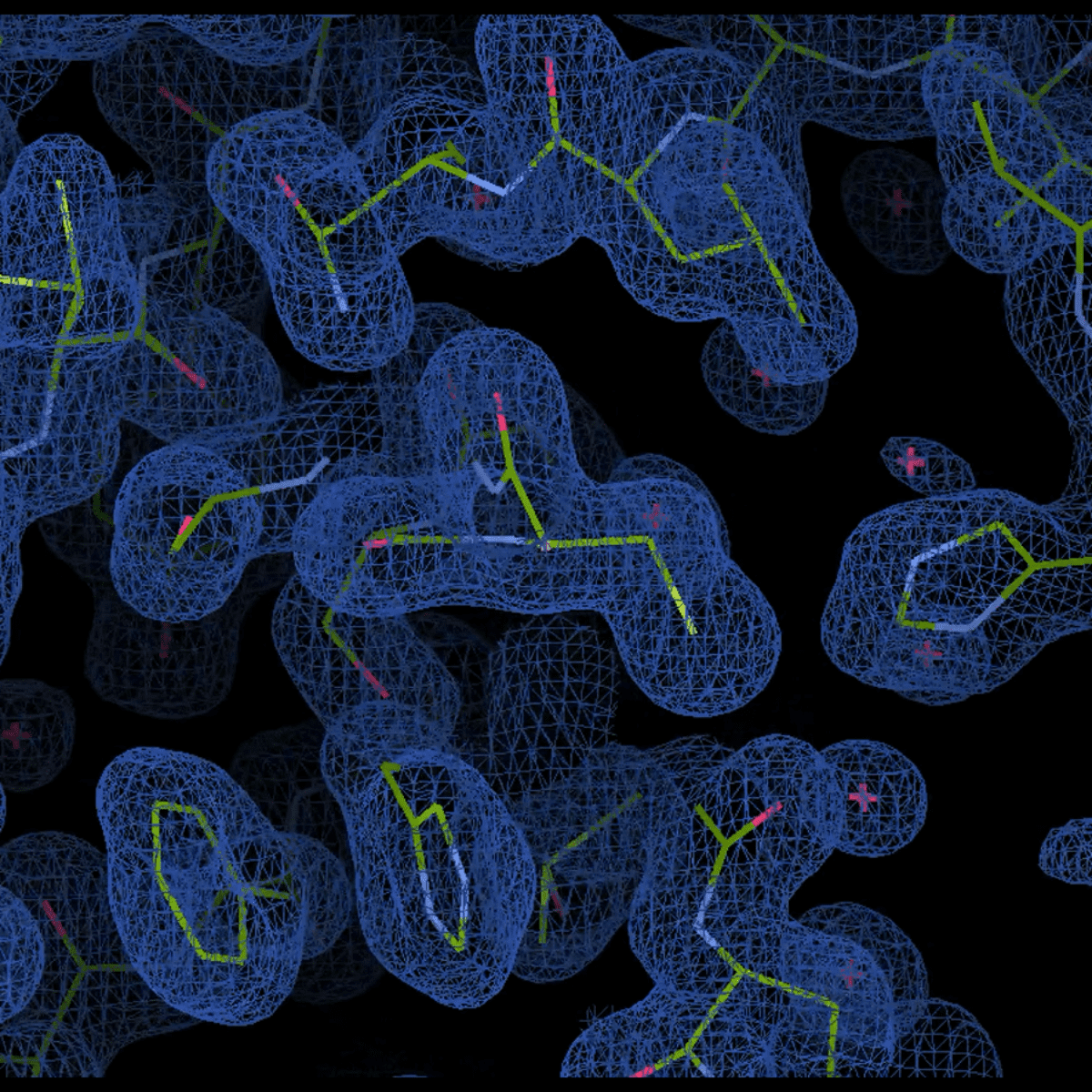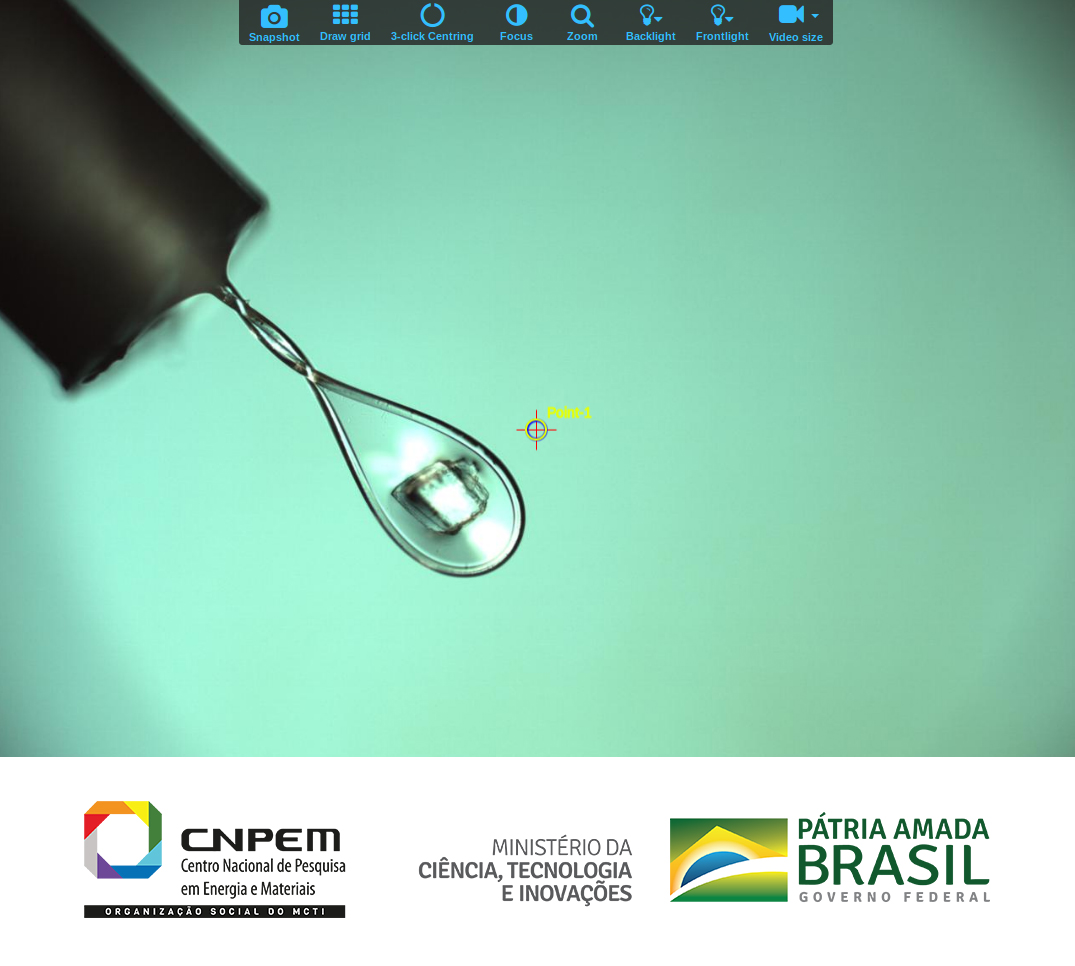
Crystals of SARS-CoV-2 proteins were the first samples analyzed
The new Brazilian synchrotron light source, Sirius, from the Brazilian Synchrotron Light Laboratory (LNLS) at the Brazilian Center for Research in Energy and Materials (CNPEM), carried out the first experiments on one of its beamlines this week. The first research station to start operating, still in the commissioning stage, can reveal details of the structure of biological molecules, such as viral proteins. These first experiments are part of an effort by CNPEM to provide a cutting-edge tool to the Brazilian scientific community working in SARS-CoV-2 research.
In these initial analyses, CNPEM researchers observed crystals of a coronavirus protein, essential for the development of COVID-19. The first results reveal details of the structure of this protein, important for understanding the biology of the virus and supporting research that seeks new drugs against the disease.
The first beamline to operate at Sirius is the MANACÁ beamline, dedicated to macromolecular crystallography. Using X-ray diffraction, this beamline can reveal the position of each of the atoms that make up the studied protein, which helps researchers to investigate its action in the body and its interaction with molecules of potential drugs.
The start of experiments at Sirius’ facilities involves a thorough testing process, in which thousands of parameters are evaluated to ensure the generation of accurate data. “To verify that the research station is within the design parameters, generating reliable results, we first study the structure of well-known proteins, such as lysozyme – a molecule present in our tears and saliva. We reproduced the expected measurements for these standard samples and then, after confirming the good performance of the equipment, we proceeded to collect data in a real experiment, with protein crystals from SARS-CoV-2 ”, explains Dr. Ana Carolina Zeri, researcher coordinating this beamline.
The first experiments

Structure of SARS-CoV-2 3CL protein obtained on Sirius
The sample analyzed in the first experiments at Sirius was the 3CL protein from SARS-CoV-2. Produced and crystallized at CNPEM’s Brazilian Biosciences National Laboratory (LNBio), the 3CL protein participates in the virus replication process within the organism during infection. “Initially, we reproduced the structure of a protein already known to test the results generated by MANACÁ. Upon obtaining reliable and competitive data, we will deepen the studies in molecular and structural biology that integrate our task-force against SARS-CoV-2. We have several researchers mobilized to investigate the molecular mechanisms related to the activity of this protein, to seek inhibitors of its activity, to study other viral proteins, to generate knowledge that can support the development of drugs against the disease,” details Dr. Kleber Franchini, LNBio Director. The next steps of CNPEM’s research are part of the MCTI Virus Network, a strategic advisory committee of the Brazilian Ministry of Science, Technology, and Innovations (MCTI) that works in the articulation of the Ministry’s Research Units involved in fighting the coronavirus.
Exceptional call for proposals from the scientific community

Crystal of SARS-CoV-2 3CL protein collected for analysis at the first research station to receive an experiment at Sirius
“In addition to our commitment to the governmental research agenda with SARS-Cov-2, coordinated by MCTI, MANACÁ’s operation will benefit the scientific community across Brazil. Researchers studying the molecular mechanisms related to this disease can submit, starting next week, research proposals to use this beamline,” announces Dr. Mateus Cardoso, Head of LNLS’ Soft and Biological Materials Division.
Research proposals from the scientific community will undergo a technical evaluation by LNLS’ specialists. “At this moment, the equipment is still under the scientific commissioning phase, carrying out experiments under these conditions impose some limitations. However, in response to the crisis caused by COVID-19, we chose to make this tool available in advance to researchers who are already familiar with protein crystallography experiments, so that they can advance in the molecular understanding of the virus ”, ponders LNLS Director, Dr. Harry Westfahl Jr.
Among the 13 beamlines planned for the first phase of the Sirius project, two of them had their assembly and commissioning prioritized, since the beginning of the pandemic, for allowing studies on the virus and its interaction with human cells. In addition to MANACÁ, the team works around the clock to deliver, in the coming months, the CATERETÊ beamline, focused on X-ray Coherent Scattering techniques, where it will be possible to produce high-resolution three-dimensional cellular images.
Dr. Antonio José Roque da Silva, CNPEM Director-General and Director of the Sirius project, points out that, in response to this emergency, the scientific community is being called upon to present their research proposals in SARS-CoV-2. “We start to offer unprecedented research conditions to researchers in Brazil. At this moment, when there is so much talk about the importance of science and technology for solving problems, we bring forward an advanced machine, designed by Brazilians, and built in partnership with the national industry. I hope that all sectors of society recognize, more and more, the importance of science for the solution of our problems and the capabilities we have in Brazil,” he concludes.
About Sirius
Designed and built by Brazilians, Sirius is one of the most advanced synchrotron light sources in the world. This great scientific equipment has at its core state-of-the-art electron accelerators for generating synchrotron light, a kind of electromagnetic radiation capable of revealing the microstructure of organic and inorganic materials. These analyses are carried out at research stations called beamlines. Sirius will support several beamlines, optimized for different experiments, and that operate independently of each other, allowing different groups of researchers to work simultaneously, in different researches in a wide range of fields, such as health, energy, new materials, environment, among others.
The different experimental techniques available on Sirius’ beamlines will allow us to observe microscopic aspects of the materials, such as the atoms and molecules that constitute them, their chemical states and their spatial organization, in addition to monitoring the evolution over time of physical, chemical and biological processes that occur in fractions of a second. In a beamline, it is also possible to follow how these microscopic characteristics change when the material is subjected to various conditions, such as high temperatures, mechanical stress, pressure, electric or magnetic fields, corrosive environments, among others. This ability is one of the main advantages of synchrotron light sources when compared to other high-resolution experimental techniques.
Sirius’ beamlines are advanced scientific instruments, designed to solve problems in strategic areas for the development of Brazil. Initially, a set of 13 beamlines is planned to cover a wide variety of scientific programs. Altogether, Sirius will be able to house up to 38 beamlines.
Sirius is financed by the Brazilian Ministry of Science, Technology, and Innovations (MCTI).
About MANACÁ
The MANACÁ beamline is dedicated to macromolecular crystallography, allowing the study of the three-dimensional structure of human proteins and enzymes, and pathogens, with submicrometric resolution. The technique can reveal the position of each of the atoms that make up the studied protein and allows the investigation of its action in the organism and its interaction with drug candidates. Thus, the search for new drugs can be made more efficient or known drugs can have their effectiveness increased from the deeper understanding of its action in the organism.
Detailed information on the structure of proteins is important not only in health but also for the development of biofuels, pesticides, food, and cosmetics.
Brazilian Technology
Synchrotron light sources are one of the most sophisticated examples of open and multidisciplinary research infrastructure, and Sirius is a key tool for solving important issues for the Brazilian academic and industrial communities. The versatility of a synchrotron light source allows the development of research in strategic areas, such as energy, food, environment, health, defense, and many others. This is the reason why synchrotron light technology is becoming increasingly popular around the world. It is also the reason why countries with strong, technology-based economies already have one or more synchrotron light sources or are building them.
The X-rays used in the first experiments performed at Sirius are generated in state-of-the-art electron accelerators and focused on the micrometric protein crystal samples, using technologies developed by the CNPEM engineering teams and implemented in partnership with the Brazilian industry. Financed by the Brazilian Ministry of Science, Technology, and Innovations (MCTI), 85% of Sirius’ resources were invested in Brazil, in partnership with national companies. During its development, contracts were signed with more than 300 small, medium, and large companies, of which more than 40 developed bespoke technological solutions for Sirius, together with CNPEM researchers and engineers.
Exceptionally, LNLS opens a call for proposals for crystallography users who wish to analyze samples related to COVID-19
Harry Westfahl Junior has served as LNLS’ scientific director since 2013, and coordinates Sirius’ beamline design and construction